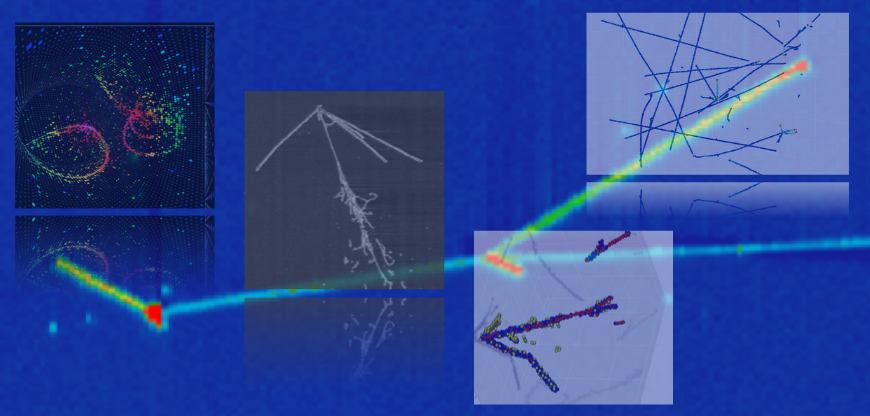Description
Machine learning based data reconstruction and analysis in ring imaging Cherenkov and highly-segmented optical detectors
A key challenge in the application of deep learning to neutrino experiments is overcoming the discrepancy between data and Monte Carlo simulation used in training. In order to mitigate bias when deep learning models are used as part of an analysis they must be made robust to mismodelling of the detector simulation. We demonstrate that contrastive learning can be applied as a pre-training step...
Hyper-Kamiokande (HK) is the next generation neutrino observatory in Japan and the successor of Super-Kamiokande (SK) detector. It has been designed to extend the legacy of its predecessor into new realms of neutrino physics ranging from MeV (Solar or Supernovae neutrino) to several GeV energy scales, and in particular, discover CP violation for the very first time in the lepton sector. To...
KM3NeT/ARCA and KM3NeT/ORCA are the new generation of neutrino telescopes located in the depths of the Mediterranean Sea. Each comprises a grid of optical sensors that capture the Cherenkov light emitted by charged particles produced in neutrino interactions. KM3NeT/ARCA, sensitive to interactions with energies ranging from TeV to PeV, focuses on cosmic neutrinos, while KM3NeT/ORCA...
The choice of unfolding method for a cross-section measurement is tightly coupled to the model dependence of the efficiency correction and the overall impact of cross-section modeling uncertainties in the analysis. A key issue is the dimensionality used, as the kinematics of all outgoing particles in an event typically affects the reconstruction performance in a neutrino detector. OmniFold is...
In this preliminary study we consider and explore the application of Machine Learning algorithms for reconstruction in Super-Kamiokande. To do so simulated event samples have been used. The aim is the development of a tool to be employed in proton decay analysis along with the official reconstruction software (fiTQun). The final goal will be to improve Cherenkov ring detection and...
Building upon the LiquidO detection paradigm, the CLOUD detector represents a significant evolution in neutrino detection, offering rich capabilities in capturing both spatial and temporal information of low-energy particle interactions. With a 5–10-ton opaque scintillator inner detector volume, CLOUD is the byproduct of the EIC/UKRI funded AntiMatter-OTech project, whose main objective is to...

